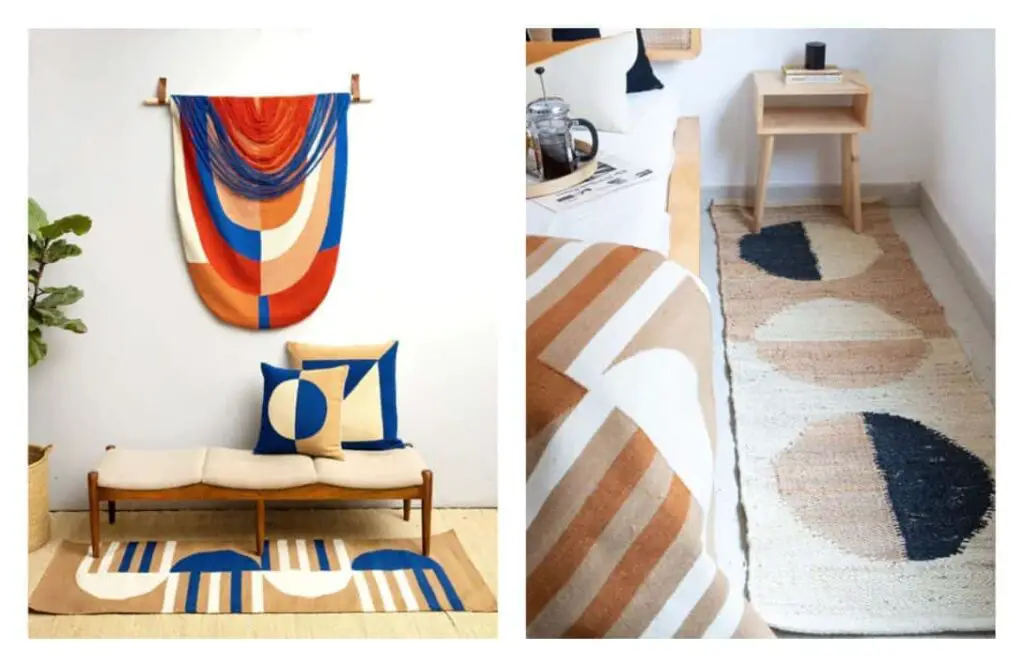In the realm of home decor, Scandinavian rugs have long stood as epitomes of minimalism and elegance. However, the beauty of these pieces extends far beyond their aesthetic appeal. A significant aspect of their allure is rooted in the sustainable practices employed in their production. This article delves deep into the eco-friendly techniques and materials that characterize Scandinavian rug-making, showcasing why these practices are not only beneficial for the environment but also for the consumer and the broader global tapestry of sustainability.
Eco-Friendly Materials in Scandinavian Rug Production
Scandinavian design is synonymous with the use of natural materials, and this is especially true in the production of rugs. Materials like wool, cotton, and jute are predominant, primarily sourced through ethical and sustainable means. Wool, often the material of choice, is prized for its durability, comfort, and fire-resistant properties. Scandinavian producers typically source wool from local farms practicing rotational grazing that not only maintains the health of the livestock but also the quality of the wool.
Cotton, another popular material, is favored for its softness and versatility. In Scandinavia, organic cotton is increasingly becoming the norm, cultivated without toxic pesticides or synthetic fertilizers, which has a lower impact on the environment. Similarly, jute, a biodegradable and compostable resource, is often used to add strength and texture to rugs. These materials are not only sustainable but are also pivotal in reducing the environmental footprint of the rug-making industry.
Innovative Production Techniques
The production techniques utilized in Scandinavian rug-making also reflect a commitment to sustainability. One such method is the use of natural dyes derived from plants, minerals, and other natural sources. These dyes are environmentally friendly and reduce harmful runoff and residues that synthetic dyes often produce. Additionally, the energy used in the manufacturing processes is increasingly sourced from renewable sources. Solar, wind, and hydropower are among the leading sources of clean energy used in these production facilities.
Water conservation is another critical aspect of the sustainable practices in rug production. Techniques such as dry tufting, which reduces water usage, and the recycling of water in dyeing processes, are becoming standard practices among Scandinavian rug producers. These efforts not only conserve precious resources but also ensure that the manufacturing footprint is as light as possible.
Social Responsibility and Ethical Labor Practices
Sustainability in rug production is not limited to environmental concerns but also encompasses social responsibility. Scandinavian companies are at the forefront of ethical labor practices, providing fair wages, safe working conditions, and a strict adherence to no child labor policies. These ethical practices ensure a positive impact on local communities and contribute to a more equitable industry standard.
The Global Impact of Sustainable Rug Production
The influence of sustainable practices in Scandinavian rug-making extends far beyond local communities or even national borders. These practices contribute to global efforts to combat climateghange and promote environmental stewardship. By choosing a Scandinavian rug, consumers are not only purchasing a piece of home decor but also participating in a culture of sustainability that has profound global implications.
Enhancing Consumer Awareness and Engagement
Educating consumers about the sustainable attributes of Scandinavian rugs is crucial for fostering greater environmental awareness and engagement. By understanding the impact of their purchase decisions, consumers can make more informed choices that align with their values. Scandinavian rug producers often engage in transparency, providing detailed information about the sourcing of materials, production processes, and the environmental impacts of their products.
Conclusion
Scandinavian rugs embody a seamless blend of style, comfort, and sustainability. The eco-friendly materials, innovative production techniques, and ethical labor practices that characterize their production are testament to a profound commitment to environmental stewardhip and social responsibility. As consumers increasingly value sustainability, the demand for products that embrace these principles continues to grow, reinforcing the importance of sustainable practices in the global market.


